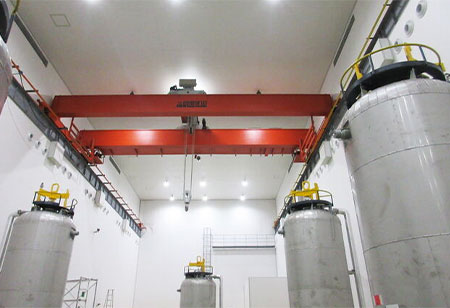Kuldeep Singh, Content Writer | Wednesday, 09 October 2024
.webp)
In pharmaceutical plant design, explosion-proof safety management is a critical factor for ensuring safe and efficient operations. Given that pharmaceutical production often involves large quantities of flammable and explosive chemicals, proper explosion-proof design not only protects workers but also prevents accidents caused by equipment failure or operational mishaps. This article explores key aspects of explosion-proof safety management in pharmaceutical plants.
When designing explosion-proof areas in a pharmaceutical plant, it is essential to organize the workshop with clear zoning. Processes involving flammable and explosive materials should be concentrated in relatively independent areas, which should be located away from other production facilities. High-risk zones should be separated from general areas by firewalls to minimize the spread of potential accidents. Workshops that contain flammable gases or dust should be located in well-ventilated single-story buildings, ideally near exterior walls for emergency venting.
An effective ventilation system is another key measure to prevent explosions in hazardous areas. These systems should be designed to continuously remove flammable gases from the air and ensure that hazardous substances do not accumulate to dangerous levels. In production areas where large volumes of organic solvents are used, independent exhaust systems must be employed to manage solvent vapors, avoiding the formation of explosive gas mixtures inside the workshop.
For areas with strict cleanliness requirements, such as cleanrooms, the ventilation system must maintain positive pressure to prevent external contaminants from entering. In the design process, it is important to ensure that cleanroom explosion-proof equipment meets both cleanliness and fire/explosion safety standards.
In pharmaceutical plants, selecting the appropriate explosion-proof equipment is crucial. In addition to standard explosion-proof electrical devices, explosion-proof material handling equipment, such as explosion-proof overhead cranes and explosion-proof electric hoists, is also indispensable. These systems are typically used to safely transport flammable or toxic materials during production and maintenance.
Furthermore, automation and remote control systems are increasingly employed to minimize direct contact with hazardous areas. Automated material handling systems reduce the likelihood of human error while improving production efficiency.
 Application of Monitoring and Alarm Systems
Application of Monitoring and Alarm SystemsTo ensure safe operations in hazardous environ- ments, pharmaceutical plants need to install monitoring and alarm systems. These systems can monitor changes in flammable gas concen- trations in real time and trigger emergency ventilation if the concentration exceeds safety thresholds. Modern explosion-proof safety de- signs often integrate sensors and interlock systems to automate safety responses, effect- ively lowering the chances of accidents.
Additionally, critical operating equipment, such as cranes used for material handling, can be controlled through remote systems, allowing operators to manage equipment from safe zones and further reduce exposure to hazardous substances.
The effectiveness of explosion-proof design relies not only on equipment and layout but also on comprehensive safety training and emergency planning. Workers should undergo regular training on the proper use of explosion-proof equipment and be familiar with emergency procedures. Regular emergency drills can help employees respond swiftly and appropriately in case of explosions or fires, minimizing damage.
Explosion-proof safety management in pharmaceutical plants involves thoughtful planning, ventilation system design, and equipment selection, along with automated operations, real-time monitoring, and thorough employee training. By implementing these measures, pharmaceutical companies can effectively prevent safety incidents caused by flammable substances, ensuring smooth production processes. Explosion-proof safety management plays a vital role in protecting workers and creating a more efficient and secure production environment.